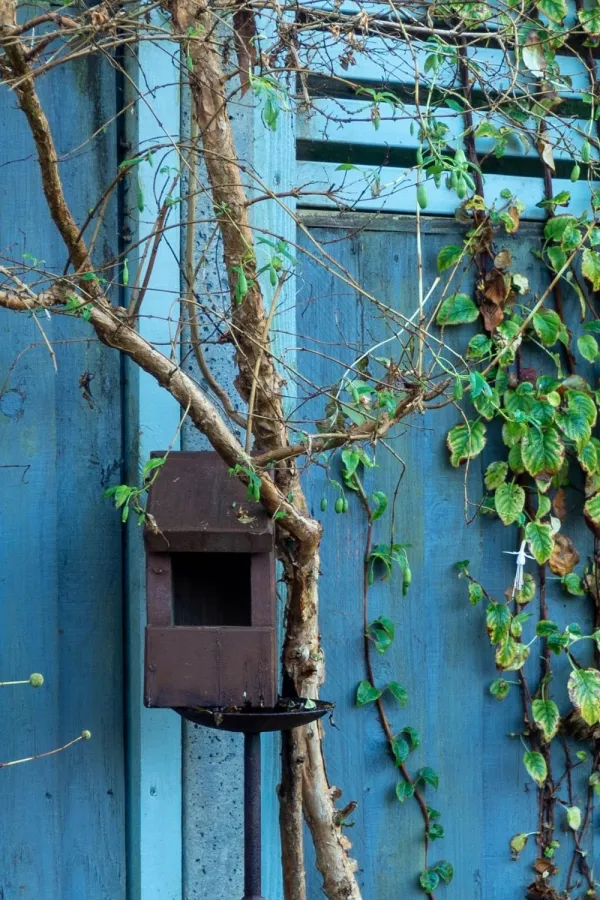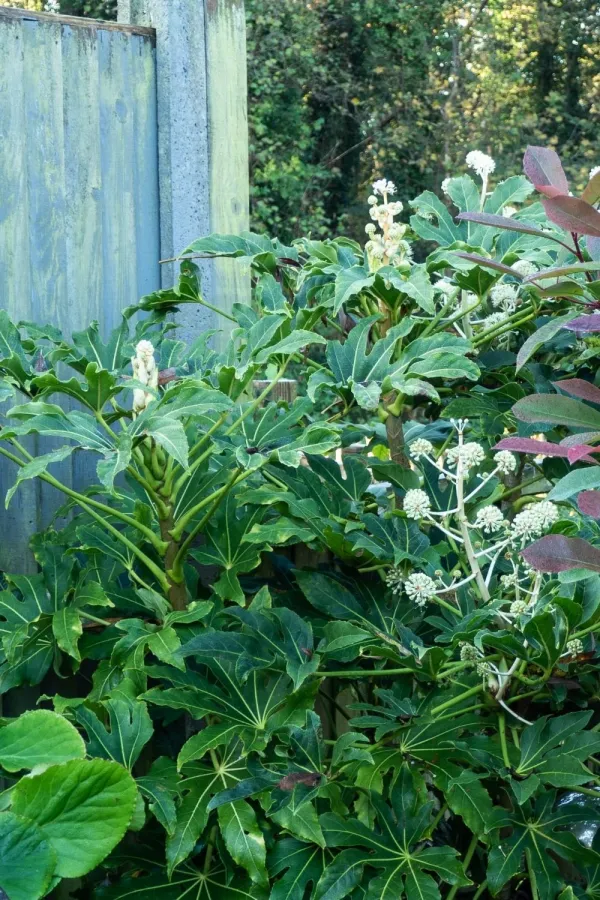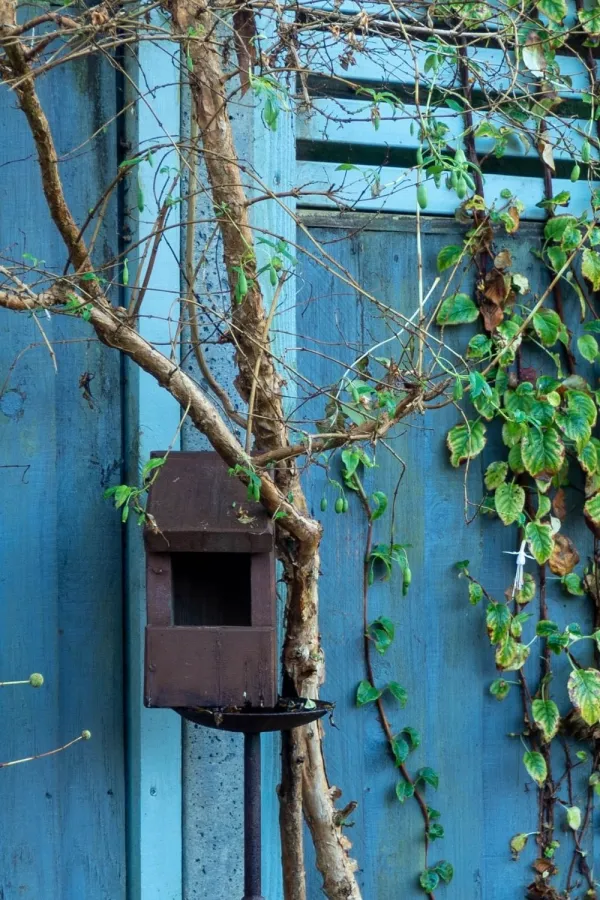A wildlife friendly garden is an important part of sustainable living today.
Urban gardens have a real part to play. I’ve been talking to Fern Alder, an award winning garden designer who has designed gardens at the top flower shows such as The RHS Chelsea Flower Show and Hampton Court Garden Festival.

A wildlife garden impacts on so many issues.
Firstly, there’s ‘insect armageddon’, for example, which is the extinction of insects. Many insect populations are a fraction of what they were. As insects are at the bottom of the food chain and we’re at the top, the loss of so many insects has serious potential consequences for our food supply.
And other wildlife is also struggling. Common garden birds and pollinating insects are widely suffering from falling populations.
Then there’s the loss of soil fertility, caused by over-farming.
And there’s flash flooding, mainly caused by the ever-growing carpet of concrete and brick covering the earth.
Fern’s garden has been described by experts as ‘the future of gardening, sustainable, all about the wildlife and a complete joy to spend time in.’
The number one wildlife friendly garden tip
A wildlife friendly garden should have at least one source of water, says Fern, however small. Insects and birds need to drink and bathe. Fern has a small stream running through her garden but also has a mini pond tucked in by some pots and a bird bath.

Having water in different places means that bigger and smaller birds don’t have to compete with each other. ‘Make sure you have different depths,’ she says. Different sizes of creature have different needs and also it makes it easier to get out.
I have a mini pond made of a high sided barrel, so I’ve put a smaller dish, plus planters inside so that there are lots of different depths.
Fern suggests that you can use anything, even an upturned dustbin lid as a bird bath. Funnily enough, that is exactly what I have and it provides a good watering can full of water.
In mosquito prone countries there are issues with leaving standing water. Check local advice and regulations, but stocking the pond with fish or keeping water moving with a pump can help a lot.
Minimise your use of chemicals
This is Fern’s number 2 tip for a wildlife friendly garden.
And I’ve interviewed to a number of head gardeners this year. I’ve been surprised at how few chemicals many head gardeners use.
Neil Miller of Hever Castle Gardens talked to me about growing roses. He says that aphids cover the roses for a few weeks in early summer but he doesn’t take any action. The predators soon build up and after three weeks they’re gone.
Using pest-killing chemicals or weed-killers doesn’t always make your gardening easier. It’s a fiddle to buy and store them, for a start and there’s always the risk of damaging plants or wildlife you don’t want to harm.
Gardening is no longer about eradicating pests
Thirty years ago gardening was about controlling pests. Now there is much more awareness of the part each insect has to play in the eco-system. For example, the Royal Horticultural Society suggests that you simply leave ants if you’ve got them in the garden. If you don’t the ants nest to be there, spray it with water to disperse the ants rather than to kill them.
You don’t have to be hard and fast organic about this. Just see what happens if you don’t do anything. For example, both viburnum beetle and black spot on roses are unsightly. But they don’t do the plant a great deal of harm. It may take a while for predators to build up, so if you don’t have instant success, don’t give up.
Also, as Fern says, plants are more likely to get pests and diseases when they’re not happy. Healthy plants don’t get such bad problems or if they do, they’re less noticeable. For example a big healthy dahlia might get a few leaves eaten by slugs, but you won’t really notice, but if slugs eat a few leaves of a plant that’s struggling then it may not even survive.
Head gardener Steve Edney stopped all use of chemicals when he moved to Canterbury Cathedral Gardens. These are visited by thousands of people each year, so borders have to look their best.
Soil is living matter and needs looking after…
I used to think of soil as an inanimate substance, but it is actually a living organism. It’s one huge ecosystem.
Fern told me that, there are more micro organisms in this teaspoon of soil than there are people on earth. And you can confirm this on the website of the United States Department of Agriculture.
That includes bacteria, algae, microscopic insects you can’t see as well as the ones you can, such as beetles, ants and mites. There are funghi, microbes, nematodes and more. They all need feeding, which is why adding garden compost, mulches and manure improves your soil.
They also all have their own inter-related structure. Digging breaks this up and can damage many of these. The US Department of Agriculture study said that often a farmer’s healthiest soil was to be found by the boundaries where there hadn’t been digging or cultivation. You can find out how to adapt no dig/no till to your garden in No Dig For Flower Borders.
Soil fertility is dropping fast, all over the world. This ultimately endangers our food supply every bit as much as the loss of pollinating insects.
I interviewed Sally Nex about her book, RHS How To Garden The Low Carbon Way. She said that there were three top ways to make your garden eco-friendly. One of these was to stop digging, except to take a plant out or put one in.
A light hand with hard landscaping…
And soil also stores water. It’s like a sponge that soaks up rain and keeps it there. So when it’s covered with tarmac or stone or concrete, it can’t do that. Heavy rainfall will roll off and into our drainage systems which flood.
So Fern advises ‘ a light hand with hard landscaping’ for a wildlife friendly garden.

The US Department of Agriculture says that to keep your soil healthy, you need to see it as little as possible. That means covering it with plants or mulches and digging it as little as possible.
Friends in Australia use their chopped up garden clippings as mulch. It suppresses weeds and eventually breaks down to feed the soil and we’ve started doing this too with both lawn mowing clippings and shreddings from the garden shredder.
Don’t be too tidy…
Shelter is important for wildlife, especially in winter. Fern says that you don’t always need to need to buy things to support wildlife. Although I think some insect hotels and bird boxes do look rather pretty. We have just bought some bat boxes and Fern has some too.

But piles of leaves and old logs will also make good shelter for many wee beasties. And evergreen plants, such as ivy will shelter birds. Fern’s garden is a long thin town garden and it ends in a long section of protected woodland. She’s cleared some brambles and a couple of dead trees to make a place to sit, but has left tree trunks and roots lying there to break down naturally. These offer lots of opportunities for wildlife. ‘Drill into the end of the trunks to make a home for solitary bees,’ she says.
Above all, leave piles of leaves and twigs in corners. Insects will shelter there and birds will enjoy picking through the leaves for insect and slug treats.
It also helps if you can put the mower away or at least leave part of your lawn to grow long. If you’ve tried this but were disappointed by getting just lots of green.
Grow flowers all year round…
Winter flowers are important for pollinating insects.
What flowers you have depends on how winter goes where you live, but here in the UK, ivy flowers around in early winter. If you don’t want ivy then Fern points out that fatsia is part of the ivy family and very accommodating in all sorts of shady and gloomy positions in the garden.

Fern’s garden includes plants like teasel which have seeds for wildlife at this time of year. And, with her garden designer hat, on she also says they provide lovely structure.
She has also added fruit trees to her garden because the fruit provides fruit for wildlife as well as spring blossom for bees and general enjoyment.
Other winter flowers for a wildlife friendly garden
Other winter flowers in the UK include mahonia (and there’s a new spineless version out Mahonia Soft Caress, which you can see in the video below.)
Winter bedding flowers like pansies aren’t usually much good because they don’t have an open heart to the flower. Pollinating insects need to be able to get into the flower, so look for single flowers.
Fern also comments that plants that flower in winter are often highly scented so as to signal to pollinators. Examples are sweet box and witch hazel, as well as mahonia.
In late winter/early spring, snowdrops, primroses, pulmonaria, hellebores, bergenia and anemones all appear and will grow in much colder climates than the UK. Fern gets many of her plants from local plant swaps, both formal and informal ones, so it’s always worth looking out for one or organising one yourself.

Leave a Reply